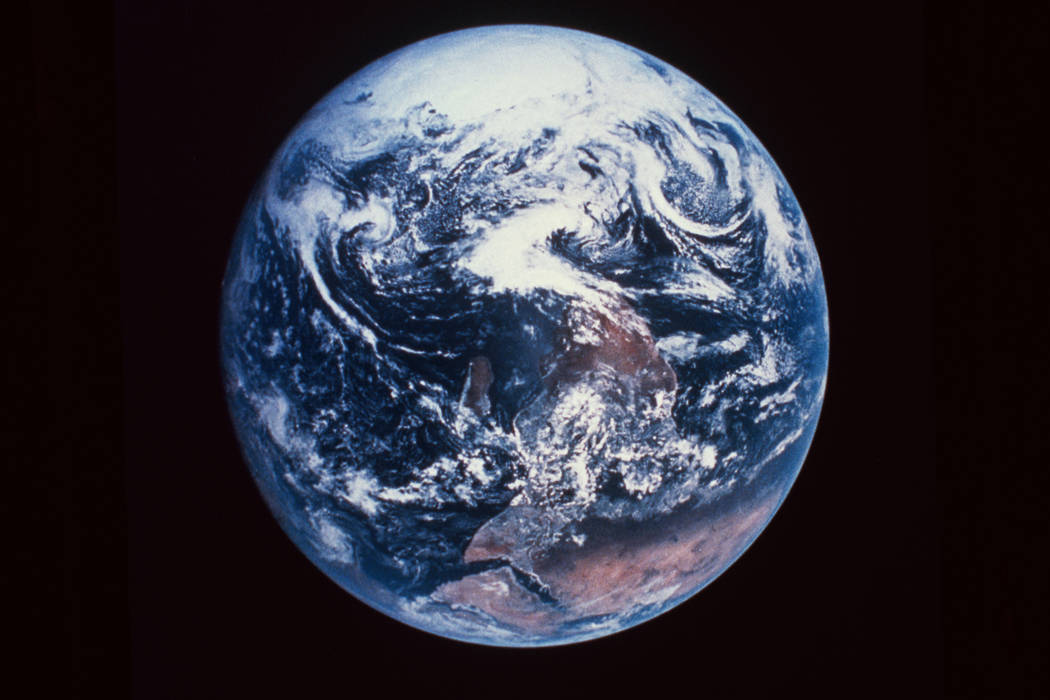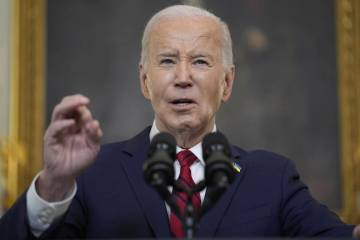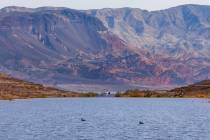Science community ready to march on Washington, across US
The March for Science is not a partisan event. But it’s political. That’s the recurring message of the organizers, who insist that this is a line the scientific community and its supporters will be able to walk. It may prove too delicate a distinction, though, when people show up in droves on Saturday with their signs and their passions.
“We’ve been asked not to make personal attacks or partisan attacks,” said honorary national co-chair Lydia Villa-Komaroff, in a teleconference this week with reporters. But Villa-Komaroff, who will be among those given two-minute speaking slots, quickly added: “This is a group of people who don’t take well being told what to do.”
The Science March, held on Earth Day, is expected to draw tens of thousands of people to the Mall, and satellite marches have been planned in more than 400 cities on six continents.
The crowd will gather near the Washington Monument for five hours of speeches and teach-ins, culminating in the march at 2 p.m. The march will follow Constitution Avenue along the north edge of the Mall to the foot of Capitol Hill.
Many mainstream science organizations — such as the American Association for the Advancement of Science, the American Geophysical Union, and the American Chemical Society — have signed on, despite their lack of experience in going to the barricades.
Rush Holt, head of AAAS, said there was initial hesitation about whether this was the kind of event a scientist ought to be joining but that members of his association overwhelmingly support the decision to participate.
This is not simply a reaction to President Donald Trump’s election, Holt said. Scientists have been worried for years that “evidence has been crowded out by ideology and opinion in public debate and policymaking.” Long before Trump’s election, people in the scientific and academic community raised concerns about the erosion of the value of expertise and the rise of pseudoscientific and anti-scientific notions. Science also found itself swept up into cultural and political battles; views on climate science, for example, increasingly reflect political ideology.
No politicians have been invited to participate in the march, organizers say, even as they acknowledge that this was inspired by the Women’s March on the day after Trump’s inauguration.
“Science is nonpartisan. That’s the reason that we respect it, because it aims to reduce bias. That’s why we have the scientific method. We felt very strongly that having politicians involved would skew that in some way,” Caroline Weinberg, a public health researcher and co-organizer of the march, said at the National Press Club earlier this month.
Carol Greider, a Johns Hopkins molecular biologist and Nobel laureate, said in the conference call this week that she will bring dozens of students and postdoctoral researchers to the march. “People are actually questioning whether they can even go on and have a career in science,” she said, noting the Trump administration’s proposal to cut nearly a fifth of the National Institutes of Health budget. “Potentially, we will lose an entire generation of people who are now trained and have the talent and are eager to make the next breakthroughs.”
Greider said it’s possible to fight for science without “labeling ourselves” as being on one partisan side or the other. That was echoed by Elias Zerhouni, former NIH head under President George W. Bush: “This is not a partisan issue. This is not one administration versus another… . It’s really an age-old debate between rational approaches to the universe and irrational approaches to the universe.”
Such comments glide past recent political developments in Washington that are the primary driver of this march. Before he became president, Trump promoted anti-scientific theories. He tweeted in 2012, “The concept of global warming was created by and for the Chinese in order to make U.S. manufacturing noncompetitive.” He echoed the fully discredited notion that there is a link between vaccines and autism. During the presidential transition he reportedly discussed with vaccine skeptic Robert F. Kennedy Jr. the possibility of creating a vaccine safety commission.
To run the Environmental Protection Agency, he appointed Scott Pruitt, who as Oklahoma attorney general had sued the agency many times and who, during an interview in March, said he did not believe that human activity is a primary driver of the observed climate change — a statement at odds with scientific research.
The entry ban pushed in the early days of the administration, and associated rhetoric about building walls and restricting immigration, alarmed many leaders of science-related institutions that rely on the expertise of foreign nationals (at MIT, for example, 40 percent of the faculty was born outside the United States, according to the university’s president).
The administration has not taken some actions initially feared by the scientific community. One fear was that climate data would be deleted or sabotaged; that hasn’t happened. The EPA’s website continues to describe climate change as largely driven by human activities.
Trump has yet to appoint anyone to several key science-related posts. He has not picked a White House science adviser. He hasn’t nominated anyone to run NASA or the National Oceanic and Atmospheric Administration or the U.S. Geological Survey. He has let Francis Collins stay on an interim basis as head of the NIH, though it’s not clear that Collins will be permanently retained. Public health positions are unoccupied that are crucial for responding to a global pandemic, a disaster every president since Ronald Reagan has faced.
Behind the scenes at the March for Science, there has been internal controversy about inclusiveness and diversity, and whether social justice should be central to the march’s messaging. On social media, a number of scientists have said they are skipping the march because they think the organizers haven’t focused enough on racism, sexism, and the scientific community’s centuries-long history of marginalizing women and people of color.
Meanwhile, conservatives have derided the march as a political enterprise in which what’s being advocated is not science, exactly, but left-leaning policies, such as the Obama administration’s environmental regulations designed to curb carbon emissions.
But for most of the scientists and science supporters who will come to Washington or other cities on Saturday, the march is a chance to show solidarity, enjoy witty protest signs, and stick up for evidence and reason.






















